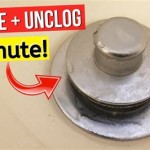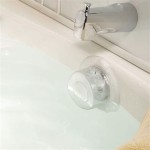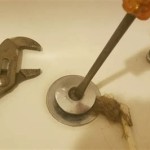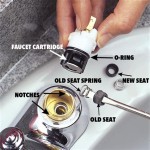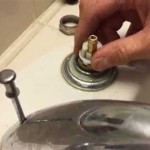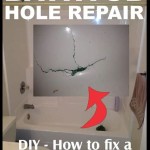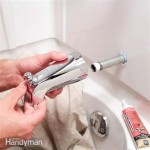Bathtub Resurfacing Cost in Florida: A Comprehensive Guide
Bathtub resurfacing, also often referred to as refinishing or reglazing, is a cost-effective alternative to bathtub replacement. In Florida, the cost of this service can vary significantly depending on several factors. This article provides a detailed overview of the factors influencing the cost of bathtub resurfacing in Florida, a breakdown of the price ranges, and important considerations for homeowners exploring this option.
The primary driver behind choosing bathtub resurfacing is often cost savings. Replacing a bathtub involves demolition, plumbing modifications, potential tiling work, and the cost of the new tub itself. This can quickly escalate into a project costing thousands of dollars. Resurfacing, on the other hand, addresses cosmetic issues such as chips, cracks, stains, and dull finishes without requiring significant structural alterations.
While precise figures are hard to pin down due to the variability of each project, understanding the contributing factors will empower homeowners to obtain accurate estimates and make informed decisions. This article aims to clarify these aspects, enabling a more transparent understanding of the bathtub resurfacing market in Florida.
Factors Influencing Bathtub Resurfacing Cost in Florida
Several key factors contribute to the overall cost of bathtub resurfacing in Florida. These factors encompass the size and material of the tub, its condition, the type of coating used, and the labor involved. A thorough understanding of these elements is crucial for accurately estimating the project's expense.
Bathtub Size and Material: The size of the bathtub directly impacts the amount of materials and labor required. Larger bathtubs naturally require more resurfacing material. The material of the bathtub also plays a role. Common bathtub materials include cast iron, steel, acrylic, and fiberglass. Cast iron bathtubs, known for their durability and heat retention, may require more extensive preparation due to their robust nature. Fiberglass and acrylic tubs, being more susceptible to damage, may require specialized repair techniques before the resurfacing process.
Condition of the Bathtub: The existing condition of the bathtub is a significant determinant of the resurfacing cost. Bathtubs with minor scratches and stains will require less preparation than those with extensive damage, such as deep chips, cracks, or rust. Repairing these damages requires additional time, materials, and specialized techniques, ultimately increasing the overall cost. Severe rust, for instance, may necessitate extensive sanding and rust removal before the resurfacing process can even begin.
Type of Coating and Finish: The type of coating used for resurfacing significantly impacts the price. Various coating options are available, including epoxy, acrylic urethane, and porcelain refinishing. Each coating offers different levels of durability, gloss, and resistance to chemicals and wear. Porcelain refinishing, while offering a high-quality, durable finish, is often the most expensive option. Epoxy and acrylic urethane coatings are generally more affordable but may not offer the same level of longevity or resistance to wear and tear. The homeowner's choice of finish, such as a glossy or matte appearance, may also affect the coating selection and associated costs.
Labor Costs: Labor costs constitute a substantial portion of the overall resurfacing expense. These costs encompass the time spent preparing the bathtub, applying the coating, and cleaning up the work area. The complexity of the project, the experience of the technician, and the geographical location within Florida can all influence labor rates. Technicians with extensive experience and specialized skills may charge higher rates. Furthermore, labor costs may vary depending on whether the project is undertaken during peak season or off-season.
Typical Bathtub Resurfacing Cost Ranges in Florida
Given the factors listed above, the typical cost of bathtub resurfacing in Florida generally falls within a range. It's vital to remember that these are estimates, and the actual cost may vary based on specific project details. Obtaining multiple quotes from reputable resurfacing companies is always recommended to get the most accurate price for your specific situation.
Basic Resurfacing: For a standard-sized bathtub with minor cosmetic issues, a basic resurfacing job might range from $300 to $500. This typically includes cleaning, light sanding, and application of a standard epoxy or acrylic urethane coating.
Intermediate Resurfacing: For tubs with more significant damage like chips, cracks, or moderate staining, the cost could range from $500 to $800. This includes additional prep work for repairs and potentially a higher-quality coating.
Advanced Resurfacing: For bathtubs requiring extensive repair work, such as severe rust removal, multiple crack repairs, or specialized finishes like porcelain refinishing, the cost can exceed $800 and potentially reach $1200 or more. This level of resurfacing often involves more specialized materials and labor.
These price ranges are broad estimates. It’s essential to ask for a detailed breakdown of costs from each contractor to understand precisely what is included in the quote. This breakdown should include the cost of materials, labor, and any additional services such as crack repair or rust removal.
Variations within Florida can further influence these estimates. Metropolitan areas like Miami, Orlando, and Tampa may have higher labor costs compared to more rural areas. Demand for resurfacing services can also fluctuate depending on the time of year, affecting pricing.
Important Considerations Before Resurfacing
Before committing to bathtub resurfacing, several crucial considerations should be carefully evaluated. These considerations encompass the long-term suitability of resurfacing, the selection of a qualified technician, and the warranty associated with the service.
Suitability of Resurfacing: Bathtub resurfacing is an excellent option for addressing cosmetic issues and extending the lifespan of a bathtub. However, it's not a suitable solution for all situations. If the bathtub has significant structural damage or is deteriorating beyond repair, replacement may be the more appropriate choice. Additionally, if the homeowner desires a complete bathroom renovation with a change in tub style or configuration, replacement may be a better option than resurfacing. The longevity of a resurfaced bathtub depends on factors such as the quality of the materials used, the skill of the technician, and the homeowner's maintenance practices. While a properly resurfaced bathtub can last for several years, it may not have the same lifespan as a brand-new tub.
Selecting a Qualified Technician: Choosing a reputable and experienced technician is crucial for a successful bathtub resurfacing project. Look for technicians who are licensed and insured, and who have a proven track record of delivering quality workmanship. Check online reviews and ask for references from previous clients. A qualified technician will thoroughly assess the condition of the bathtub, provide a detailed estimate, and use high-quality materials and techniques to ensure a durable and aesthetically pleasing finish. Inquire about the technician's experience with the specific type of bathtub material and coating being used. A knowledgeable technician will be able to answer questions about the process, the materials used, and the care required after the resurfacing is complete.
Warranty and Aftercare: Reputable resurfacing companies typically offer a warranty on their work. Understand the terms and conditions of the warranty, including what is covered and for how long. A comprehensive warranty can provide peace of mind and protect against defects in materials or workmanship. Additionally, ask about the recommended aftercare practices for maintaining the resurfaced bathtub. Proper cleaning and maintenance can significantly extend the lifespan of the new finish. Avoid using abrasive cleaners or harsh chemicals that could damage the coating. Follow the technician's recommendations for cleaning products and techniques to ensure the long-term durability and appearance of the resurfaced bathtub.
Another important factor to consider is the ventilation during and after the resurfacing process. The chemicals used in resurfacing can produce strong odors and fumes. Ensure that the work area is properly ventilated to minimize exposure. The technician may use ventilation equipment to remove fumes from the area. It's also important to allow the coating to fully cure before using the bathtub. The technician will advise on the recommended curing time, which is typically 24 to 48 hours.
Finally, remember that the lowest price is not always the best indicator of quality. Investing in a reputable technician and high-quality materials will likely result in a more durable and aesthetically pleasing finish that will last longer and provide greater value in the long run.

Refinish Bathtub In Miami Or Fort Lauderdale Florida Refinishing

Nufinishpro Of Tampa Bathroom Refinishing 5 Star Bbb A Rated

A Bathtub Recoating In South Florida America Refinishing Pros

Bathtub Refinishing Jacksonville Reglazing Resurfacing Bathtubguys

Bathtub Refinishing Reglazing Services In Lake Worth

Bathtub Refinishing Orlando Fl Reglazing

Florida Bathtub Refinishing Bathroom Miami Tampa

A Bathtub Resurfacing In South Florida America Refinishing Pros

Bathtub Refinishing And Reglazing In Davie Fl 954 300 3609

Bathtub Refinishing Reglazing Fort Lauderdale 954 300 3609


